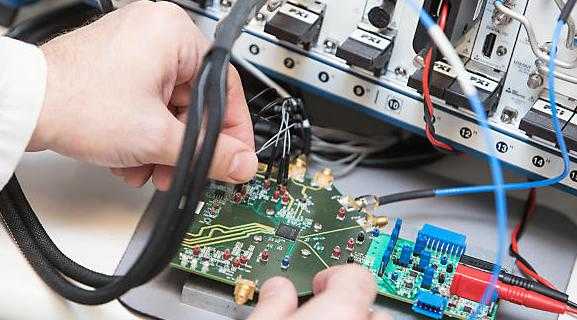RF characterization and testing

RF characterization of rectangular to ridge waveguide transitions for RF power couplers has been carried out by connecting them back to back. Rectangular waveguide to N type adapters are first calibrated by TRL method and then used for RF measurements. Detailed information is obtained about their RF behavior by measurements and full wave simulations. It is shown that the two transitions can be characterized and tuned for required return loss at design frequency of 352.2 MHz. This opens the possibility of testing and conditioning two transitions together on a test bench. Finally, a RF coupler based on these transitions is coupled to an accelerator cavity. The power coupler is successfully tested up to 200 kW, 352.2 MHz with 0.2% duty cycle.

Properties of rectangular to ridge waveguide transitions
Ridge waveguide's cut-off frequency depends on the ridge width and gap . For a ridge waveguide of cross-section 189 mm by 35 mm, ridge width and gap are considered as free parameters. The cross-section of a typical ridge waveguide is shown The variation of cutoff frequency and wave impedance at 352.2 MHz for TE10 mode are simulated using CST Microwave Studio (CST-MWS) and shown . The optimized coupler consists of three parts. Incoming rectangular WR2300 half height.
Procedure for RF characterization
The WG-RWG transition is used for coupling power to accelerator cavity through an iris between the end ridge and accelerator cavity. However, present study is focused on the transition part only as the iris coupling is adjusted depending on the type of cavity and coupling requirements. The important parameters of interest in high power accelerator systems are return loss and insertion loss at the desired frequency.
Multipacting analysis of power coupler
CST Microwave studio is used to perform multipacting studies. Using CST Trk solver , growth of seed electrons is observed at various power levels. A typical plot of multipacting electrons is shown at 0.6 kW, 352.2 MHz. It is observed from simulations that the multipacting currents are present throughout the complete range of conditioning up to 200 kW.
RF testing of power coupler
Ridge waveguide transition and iris section is fabricated with ETP copper and connected to the RFQ cavity of LEHIPA for high power testing . The RF power to the cavity is transferred from a 1 MW klystron though a waveguide based RF system and waveguide window. The low power measurements using VNA are carried out at RF window input ( which is placed just before the coupler) and at the exit of klystron.
Conclusions
A RF characterization procedure is described for ridge waveguide transitions without using ridge waveguide matched load or TRL standards. The coupler has been tuned and tested at high power by connecting it to the RFQ cavity. The proposed characterization procedure using simulations and measurements will also be useful in conditioning these coupler transitions at high power by connecting them back to back.

After reading the above, you should be more clear about “RF characterization and testing”. The follow-up RenhotecIC operation team will organize more knowledge documents related to energy storage connectors for users to consult.







Leave a Comment